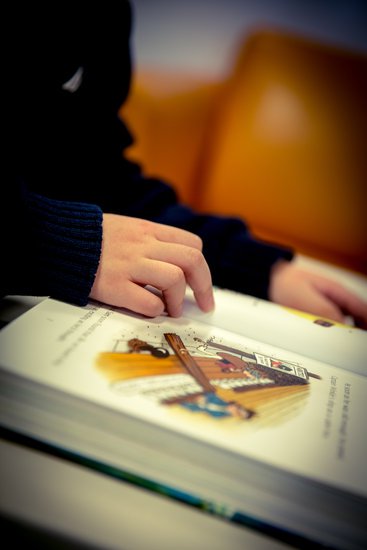
Early reading: Tips to help support and encourage your child
So your child is showing some interest in reading? Perhaps they are starting to identify that sounds relate to written letters and words, that there is a rhythm to the words on the page or that the words on the page relate to the pictures.
What we understand about reading is that spoken language skills provide a foundation for learning to read and write. What we also understand is that you can foster your child’s language and reading skills by providing regular exposure to books and an environment rich in spoken language.
So how can you help shape this learning and encourage a life-long love of spoken or written stories?
- Help your child to understand the meaning of print. Point out words on their favourite snack, their name on a painting from kinder and signs at the shops. Run your finger along words in books to help your child learn about letters and make the connection between spoken and written words.
- Encourage your child to love books and reading. Make time for sharing books with your child every day and give your child an opportunity to see you reading for pleasure. Making it part of their bedtime routine means you’ll never forget this important activity.
- Visit the local library and let your child choose some stories to read. It doesn’t matter if they appear too young or old for them – as you can always look a the pictures and tell another story if it’s too complicated, or work on some of the letters or words in younger children’s books.
- Turn book reading into book sharing. Reading is a two way interaction and something you do with your child, not to your child. Give your child lots of opportunities to share their ideas about the book by pausing and waiting to see what they say or do. Bring books to life by adding fun sounds (for example, voices for characters, animal noises) and gestures while reading books.
- Break the rules when reading books together. This may mean: not always starting at the beginning of the book, skipping pages, going back to a favourite section several times, talking about the pictures rather than reading the words, or changing the words to make them more appropriate for your child.
- Let your child be the storyteller. Children often memorize their favourite books. Encourage them to ‘read’ the story to you or a sibling by retelling the story from their memory or describing what they can see in the pictures.
- Make your own books. Children love homemade books because they are personalised and they can help make them. Make a photo book about a special event, like a family holiday, a birthday celebration or a trip to the park. You can create an interactive book by adding real objects for your child to touch and explore – for example, pieces of tan bark and leaves from the park, wrapping paper and ribbon from their birthday presents, or creating small flaps with pictures hidden underneath. You can add written words around the pictures and objects. Encourage your child’s language and storytelling skills by asking them to ‘retell’ the story or tell you what to write.
Supporting early reading does not mean formal reading instruction in young children. Rather, research highlights the importance of exposure to natural, literacy rich experiences and positive interactions between young children and their caregivers.
Great book ideas for children
Infants 0 – 12 months:
- Sturdy books – made from stiff cardboard, vinyl and cloth
- Interactive books – different textures to touch and feel, flaps to open and close, buttons that make sounds
- Simple, bright pictures and photographs of people and familiar objects
- Books that contain little or no text
- Interactive books – different textures to touch and feel, flaps to open and close, buttons that make sounds
- Books with rhyme, rhythm and repetition
- Examples: “That’s Not My Puppy” (and others in the series) by Usborne Touchy Feely Books, Baby Touch books by Ladybird
Young toddlers 12 – 24 months:
- Sturdy board books that are easy to carry and turn the pages
- Books about young children doing familiar activities like eating, sleeping and having a bath
- Books about animals
- Books with rhyme, rhythm and repetition
- Books that have a theme and tell a simple story.
- Interactive books – different textures to touch and feel, flaps to open and close
- Examples: Where’s Spot? By Eric Hill, Where is the Green Sheep by Mem Fox, Brown Bear, Brown Bear, What do You See? By Bill Martin Jr., Dear Zoo and Noisy Farm by Rod Campbell,
Toddlers 2 – 3 years:
- Predictable and repetitive words and phrases
- Simple stories with a main character and themes (for example, going to the doctor)
- Books that introduce new ideas (for example, a book about exploring the jungle), new experiences (for example, a new baby in the family) or imaginary ideas (for example, fairy tales).
- Examples: The Very Hungry Caterpillar by Eric Carle, We’re Going On a Bear Hunt by Michael Rosen, any of the ‘Maisy’ books by Lucy Cousins, The Very Cranky Bear by Nick Bland, Edwina the Emu by Sheena Knowles
For more information, speak to a qualified Speech Pathologist or visit the following websites:
http://www.earlychildhoodaustralia.org.au/
http://raisingchildren.net.au/articles/developing_literacy.html
We also post our favourite book choices on our Pinterest page:
http://www.pinterest.com/childtherapy/best-books-for-sharing
Author: Michelle Boyall (Speech Pathologist)

